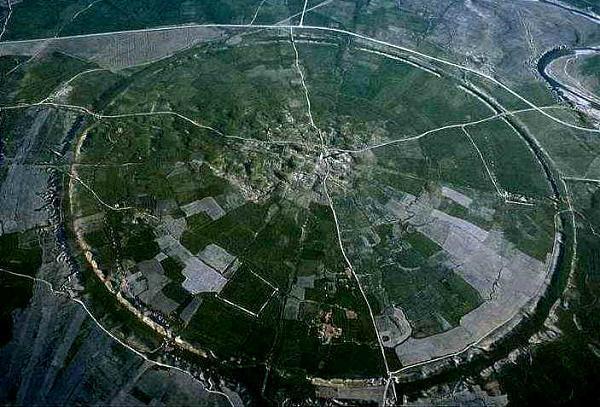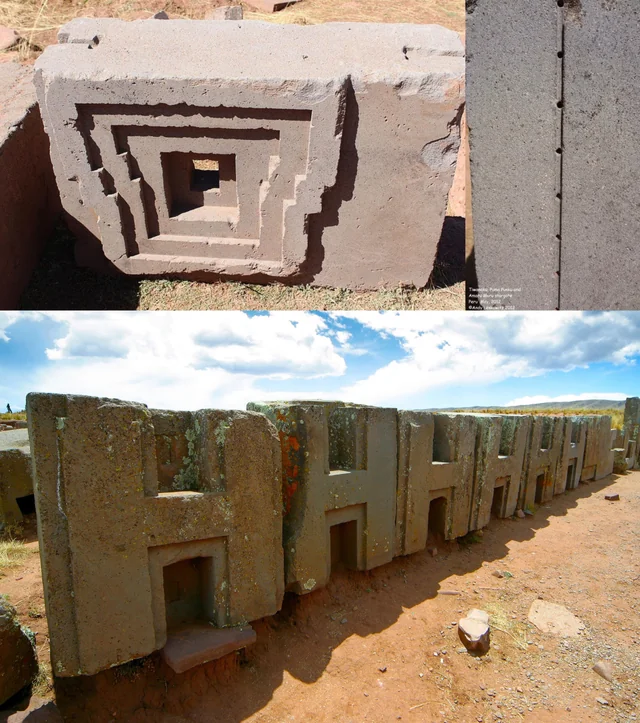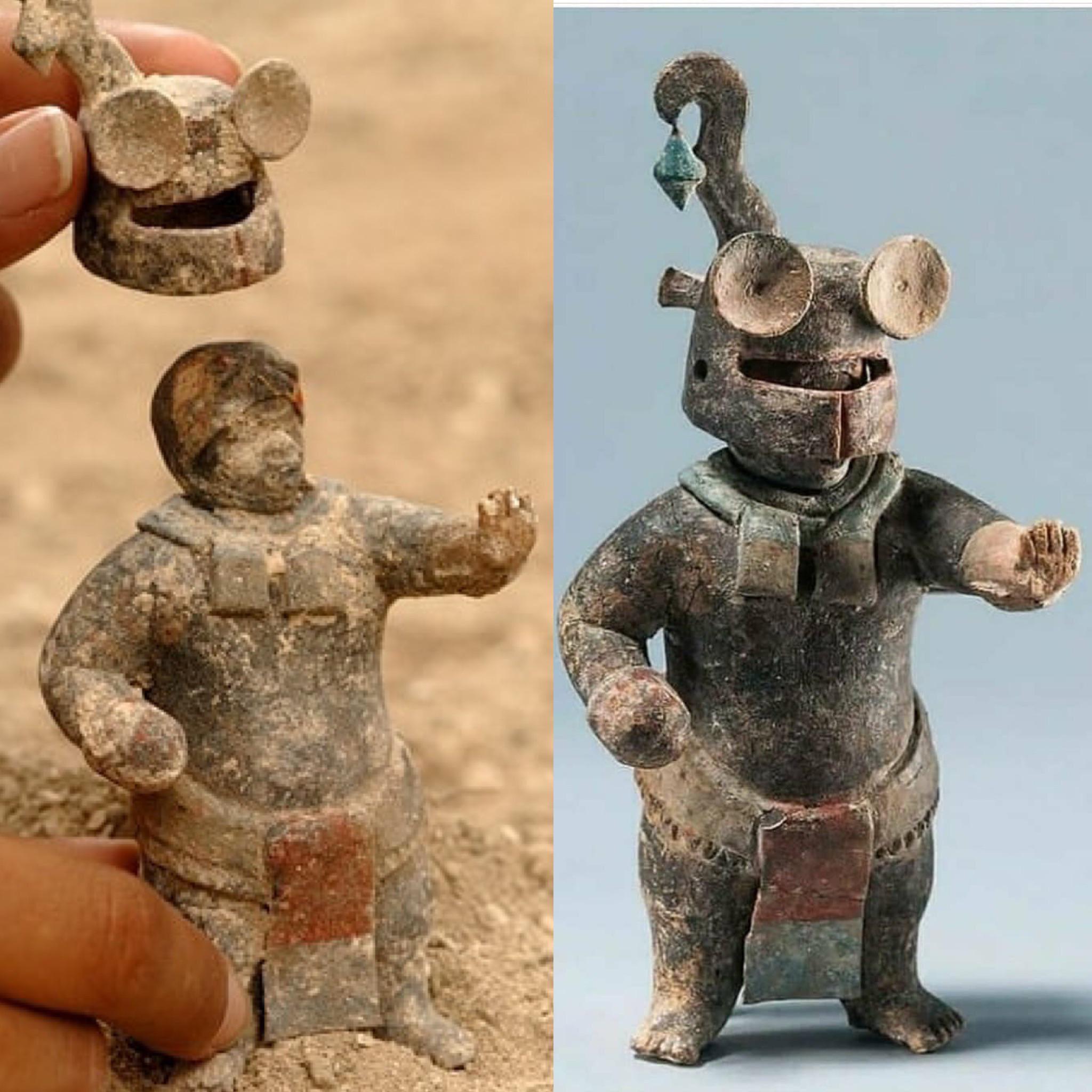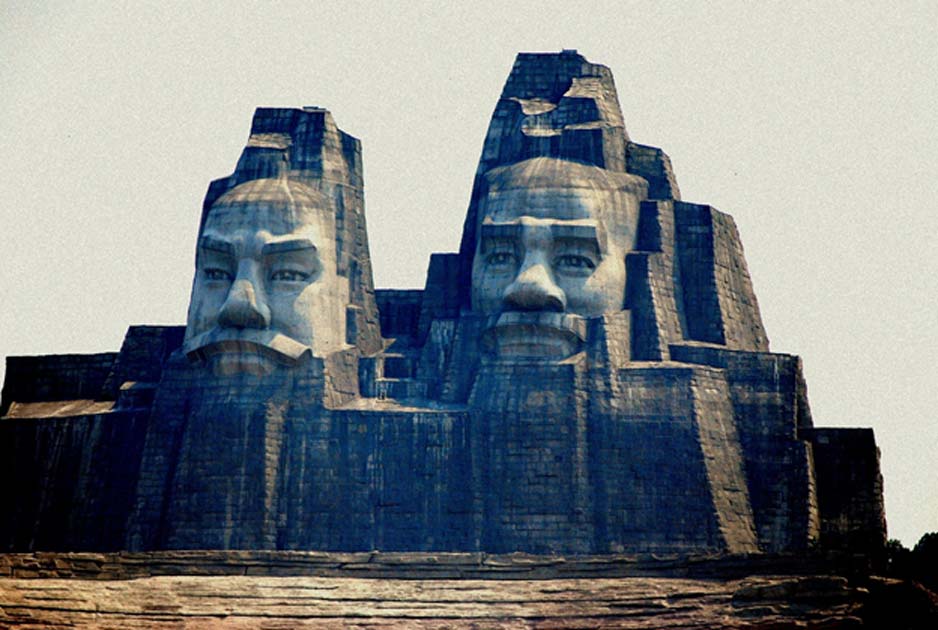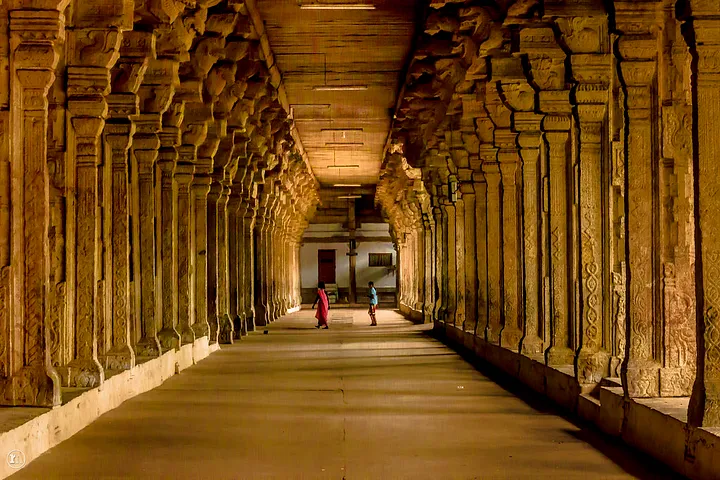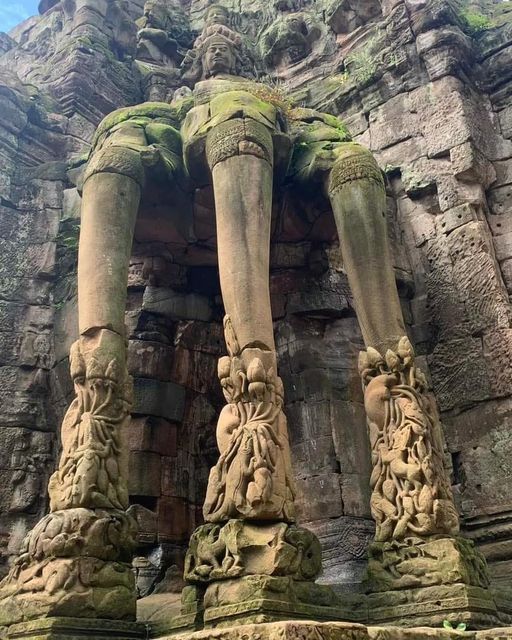
Angkor Thom is a famous archaeological site in Cambodia, located near Siem Reap. It was the last and most enduring capital city of the Khmer Empire. The South Gate of Angkor Thom is one of the five entrance gates that lead into the city. Each gate is adorned with impressive stone carvings and statues.
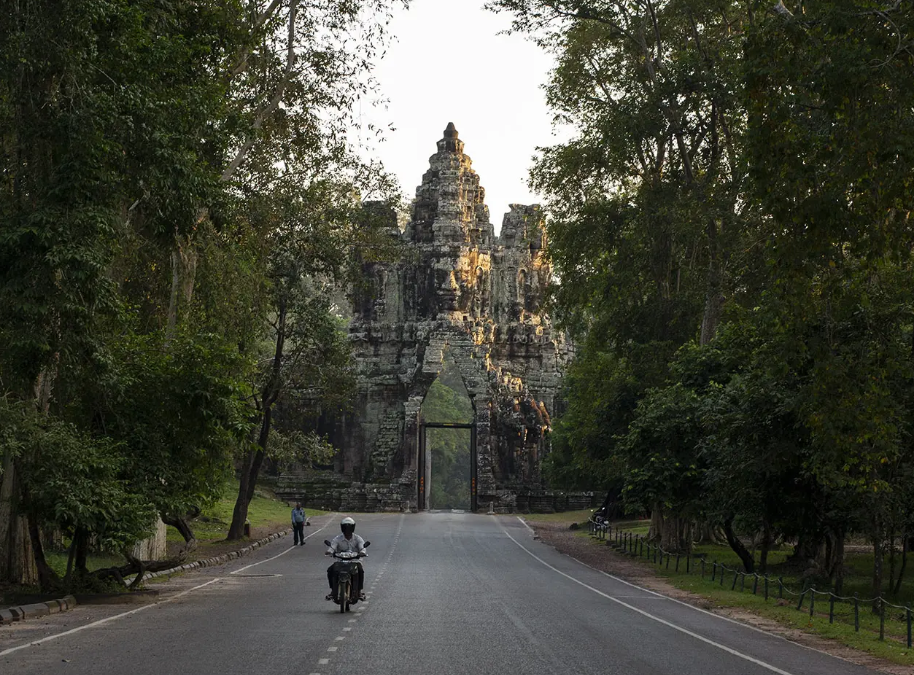
The South Gate is particularly notable for its well-preserved causeway flanked by 54 stone figures on each side, representing gods and demons engaged in a famous Hindu myth called the “Churning of the Ocean of Milk.” These intricate stone carvings are known as the “devas” (gods) on the left side and “asuras” (demons) on the right side, pulling on the body of the serpent Vasuki.
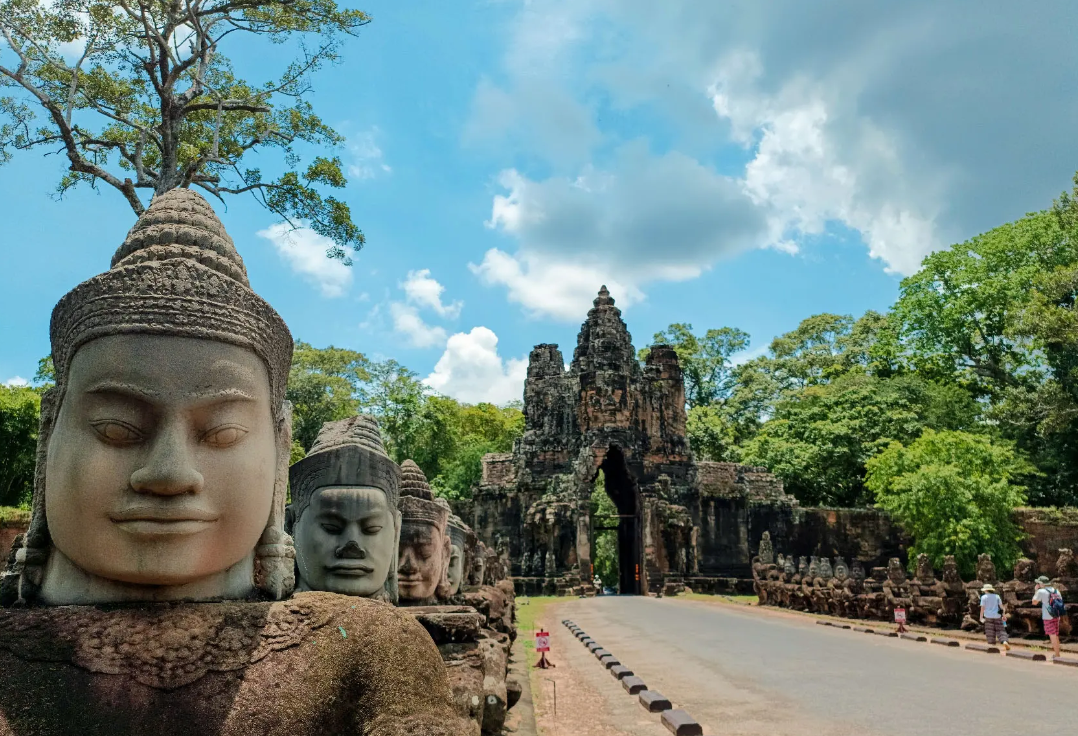
The four giant faces of Avalokiteshvara, a bodhisattva associated with compassion, are another highlight of the South Gate. These serene and imposing faces are carved into the towers at the top of the gate, facing in each cardinal direction.
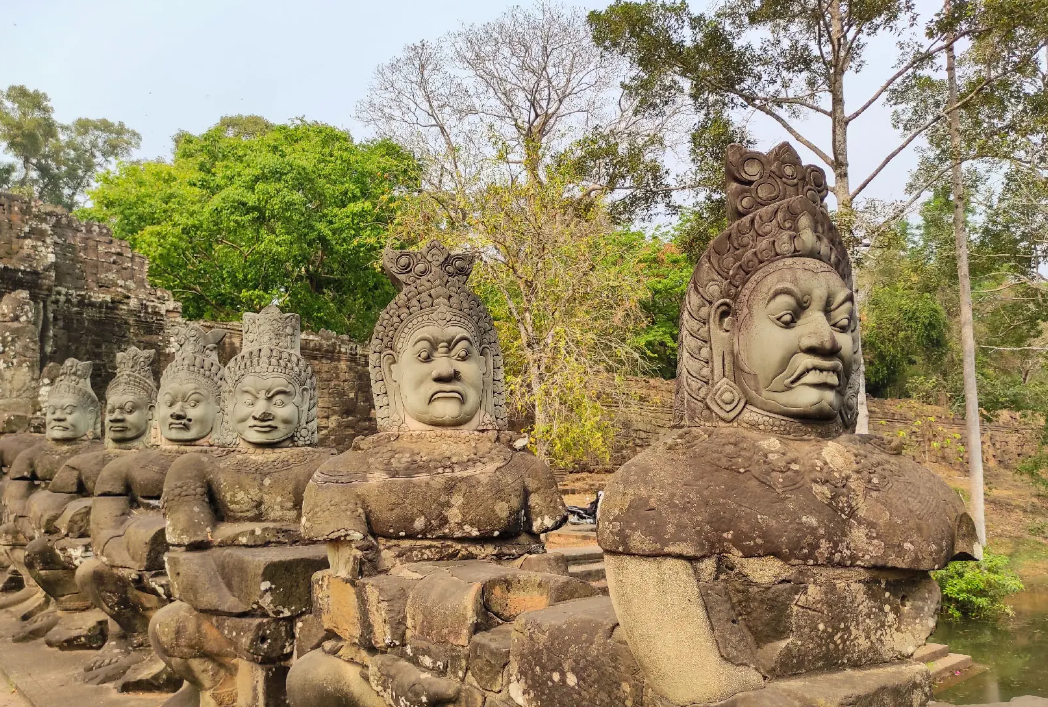
The South Gate provides a dramatic entrance to the ancient city of Angkor Thom, and its detailed artwork showcases the artistic and architectural prowess of the Khmer civilization during the 12th century. Visitors to Angkor Thom often begin their exploration of the site by passing through the South Gate, marveling at the intricate carvings that tell stories from Hindu mythology and Khmer history.
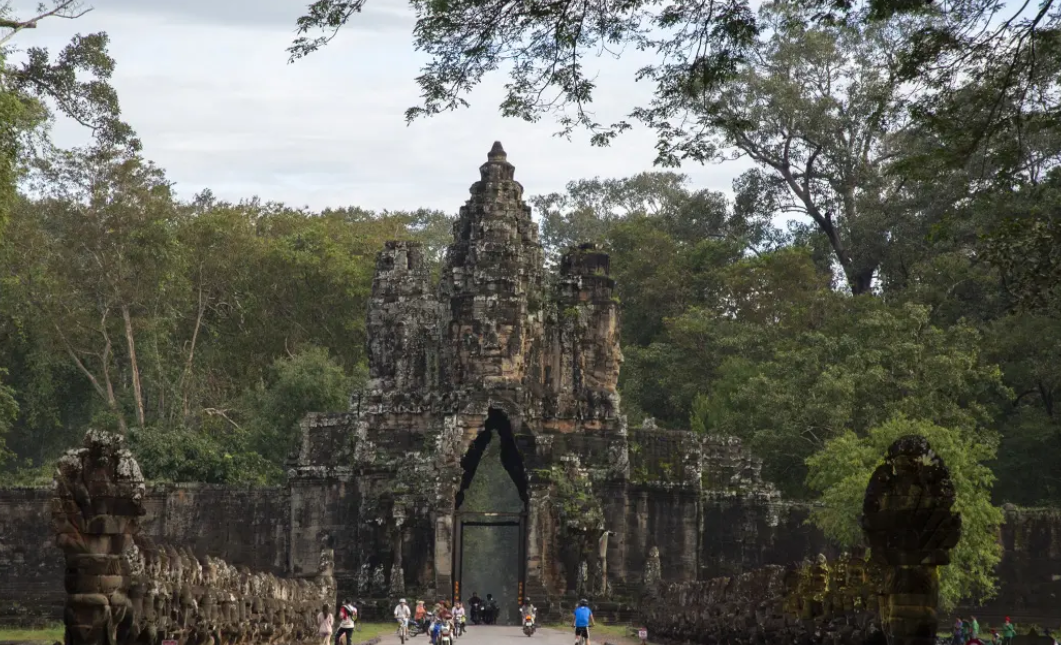
Certainly! The South Gate of Angkor Thom is a significant and well-preserved entrance to the ancient city of Angkor Thom in Cambodia. Here are more details about this historical site:
Construction Period:
-
- Angkor Thom was built in the late 12th century by King Jayavarman VII, who is also credited with the construction of many other iconic structures in the Angkor region.
Architectural Features:
-
- The South Gate is part of a square-shaped wall that surrounds Angkor Thom. The gate is approached by a causeway that spans across the moat surrounding the city.
- The gate itself is adorned with a series of towers, each crowned with four gigantic faces facing in different directions. These faces are believed to represent Bodhisattva Avalokiteshvara, a compassionate deity, or possibly the likeness of King Jayavarman VII.
Stone Faces:
-
- The most striking feature of the South Gate is the intricate and well-preserved stone faces. Each face is about 4 meters high and exhibits a serene expression with downcast eyes and a subtle smile.
- The faces are carved into the stone towers, creating a mesmerizing and enigmatic atmosphere for those passing through the gate.
Causeway and Statues:
-
- The causeway leading to the South Gate is flanked by statues of gods and demons, portraying the Hindu mythological story of the Churning of the Ocean of Milk.
- The statues on both sides of the causeway include 54 figures of gods and 54 figures of demons, each holding the body of the multi-headed serpent Vasuki.
Symbolism:
-
- The architecture and iconography of the South Gate carry symbolic meanings related to Hindu and Buddhist cosmology. The faces are often interpreted as benevolent guardians welcoming visitors into the sacred city.
Tourist Attraction:
-
- The South Gate of Angkor Thom is a popular tourist destination within the larger Angkor Archaeological Park. Visitors often marvel at the intricate carvings, grandeur, and historical significance of this entrance.
Conservation Efforts:
-
- Efforts have been made to preserve and protect the South Gate and other structures in Angkor Thom. Conservation projects aim to maintain the site’s integrity and prevent further deterioration.
UNESCO World Heritage Site:
-
- Angkor Thom, including the South Gate, is designated as a UNESCO World Heritage Site, recognizing its cultural and historical importance on a global scale.
Visiting the South Gate of Angkor Thom provides a unique opportunity to step back in time and appreciate the architectural and artistic achievements of the Khmer Empire.
